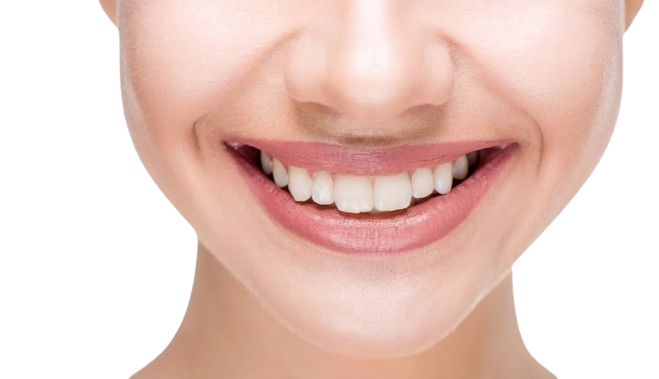Understanding the Gap Between Teeth
Understanding the gap between your teeth is crucial before you embark on any journey to address it.
Gaps between teeth, also known as diastemas, can occur for various reasons, including genetics, missing teeth, improper oral habits, or mismatched dental crowns. Each case is unique, and the approach to reducing the gap may vary.
Quick Summary
It’s essential to consult with a dental professional to determine the underlying cause of your teeth gap and to explore the most suitable treatment options.
In some instances, natural remedies and exercises can help improve the appearance of the gap, while in other cases, orthodontic treatment may be necessary for a more significant correction.
To effectively reduce the gap between your teeth, it’s essential to have realistic expectations and commit to a consistent routine.
With patience and dedication, you can achieve noticeable results over time and enhance your smile confidently.
Common Causes of Gaps Between Teeth
Gaps between teeth can stem from a variety of factors, with genetics playing a significant role in many cases. Inherited traits such as small teeth or a large jawbone can create spaces between teeth that may be more challenging to address naturally.
Additionally, habits like thumb sucking or using pacifiers beyond infancy can contribute to the development of gaps. Missing teeth can also lead to gaps as surrounding teeth may shift to fill the space over time.
Poor oral habits, such as tongue thrusting or incorrect swallowing patterns, can exert pressure on teeth, causing them to move and create spaces.
Understanding the specific cause of your teeth gap can help determine the most effective approach to reducing it. While some factors contributing to teeth gaps are beyond your control, there are proactive steps you can take to minimize their impact and work towards a more uniform smile.
By addressing underlying issues and adopting healthy oral practices, you can support the natural alignment of your teeth and reduce the visibility of gaps.
The Importance of Addressing Gaps Between Teeth
Closing the gap between your teeth goes beyond cosmetic concerns – it can also have implications for your oral health and overall well-being. Gaps between teeth can trap food particles and bacteria, increasing the risk of plaque buildup, tooth decay, and gum disease.
Properly aligned teeth are easier to clean and less prone to oral health issues. Moreover, gaps between teeth can affect your bite alignment and jaw function, potentially leading to discomfort or temporomandibular joint (TMJ) problems.
By addressing teeth gaps, you can improve your bite stability, enhance chewing efficiency, and reduce the strain on your jaw muscles.
From a confidence standpoint, closing the gap between your teeth can boost your self-esteem and transform your smile, allowing you to feel more comfortable and secure in social interactions.
Embracing a healthy smile not only enhances your appearance but also positively impacts your overall outlook on life.
Natural Remedies for Reducing Gaps Between Teeth
When it comes to reducing gaps between your teeth naturally, several remedies and techniques can aid in the process.
These natural approaches are non-invasive, cost-effective, and can be easily incorporated into your daily oral care routine.
While results may vary depending on the severity of the gap, consistency is key to achieving gradual improvement.
One popular natural remedy for promoting dental health and potentially closing gaps between teeth is oil pulling. This ancient practice involves swishing oil, such as coconut or sesame oil, in your mouth for several minutes to remove bacteria and toxins.
Oil pulling can help strengthen teeth and gums, improve oral hygiene, and support overall dental wellness. In addition to oil pulling, specific tongue exercises can be beneficial in closing gaps between teeth.
By engaging the muscles of the tongue and jaw, you can promote proper alignment and spacing of teeth over time.
Simple exercises like pressing the tongue against the roof of the mouth or sweeping it along the teeth can help encourage teeth to move closer together.
Maintaining proper oral hygiene is essential for supporting the natural alignment of your teeth and reducing gaps. Brushing and flossing regularly, using fluoride toothpaste, and visiting your dentist for routine check-ups can prevent oral health issues that may exacerbate teeth gaps.
A clean and healthy mouth provides a solid foundation for closing the gap between your teeth.
Diet and Nutrition Tips for Improving Dental Health
Your diet and nutritional choices play a significant role in maintaining optimal dental health and supporting the alignment of your teeth.
Consuming a balanced diet rich in vitamins, minerals, and nutrients can promote strong teeth and gums while reducing the risk of oral health problems. Certain foods can also aid in closing gaps between teeth naturally.
Foods high in calcium, such as dairy products, leafy greens, and almonds, contribute to healthy tooth enamel and bone density. Vitamin C-rich foods like citrus fruits and bell peppers can strengthen gums and support collagen production for oral tissue health.
Crunchy fruits and vegetables, like apples and carrots, can help clean teeth and stimulate saliva production. Limiting sugary and acidic foods and beverages is crucial for preventing tooth decay and maintaining optimal oral health.
These substances can erode tooth enamel, increase the risk of cavities, and compromise the integrity of your teeth. By making mindful choices about what you eat and drink, you can protect your teeth and gums while working towards reducing gaps between your teeth.
When to Seek Professional Help for Closing Gaps Between Teeth
While natural remedies and lifestyle changes can be effective in reducing minor gaps between teeth, there are instances where professional intervention may be necessary to achieve desired results.
If you have significant gaps or alignment issues that impact your bite or oral health, consulting with a dentist or orthodontist is recommended.
Orthodontic treatments such as braces, aligners, or retainers may be prescribed to gradually shift teeth into the desired position and close gaps effectively.
These interventions are tailored to your specific needs and can address more complex dental concerns that natural remedies alone may not fully resolve.
Seeking professional help ensures a comprehensive approach to improving your smile. Regular dental visits are essential for monitoring the progress of gap closure and maintaining your oral health throughout the treatment process.
Your dentist can assess the alignment of your teeth, make adjustments as needed, and provide guidance on proper care to optimize results.
With professional guidance and support, you can achieve a harmonious smile that enhances both your appearance and oral function.
Conclusion:
In conclusion, reducing the gap between your teeth naturally at home is achievable with the right strategies and mindset.
By understanding the causes of teeth gaps, adopting natural remedies, maintaining good oral hygiene, and seeking professional help when needed, you can work towards a more harmonious smile and improved oral health.
Remember that closing the gap between your teeth is not just about aesthetics – it’s about promoting overall well-being and confidence in your smile.
Embrace the journey towards a healthier, more radiant smile, and celebrate the progress you make along the way. With patience, consistency, and the support of dental professionals, you can achieve the smile of your dreams and radiate self-assurance in every interaction.

